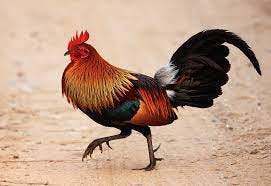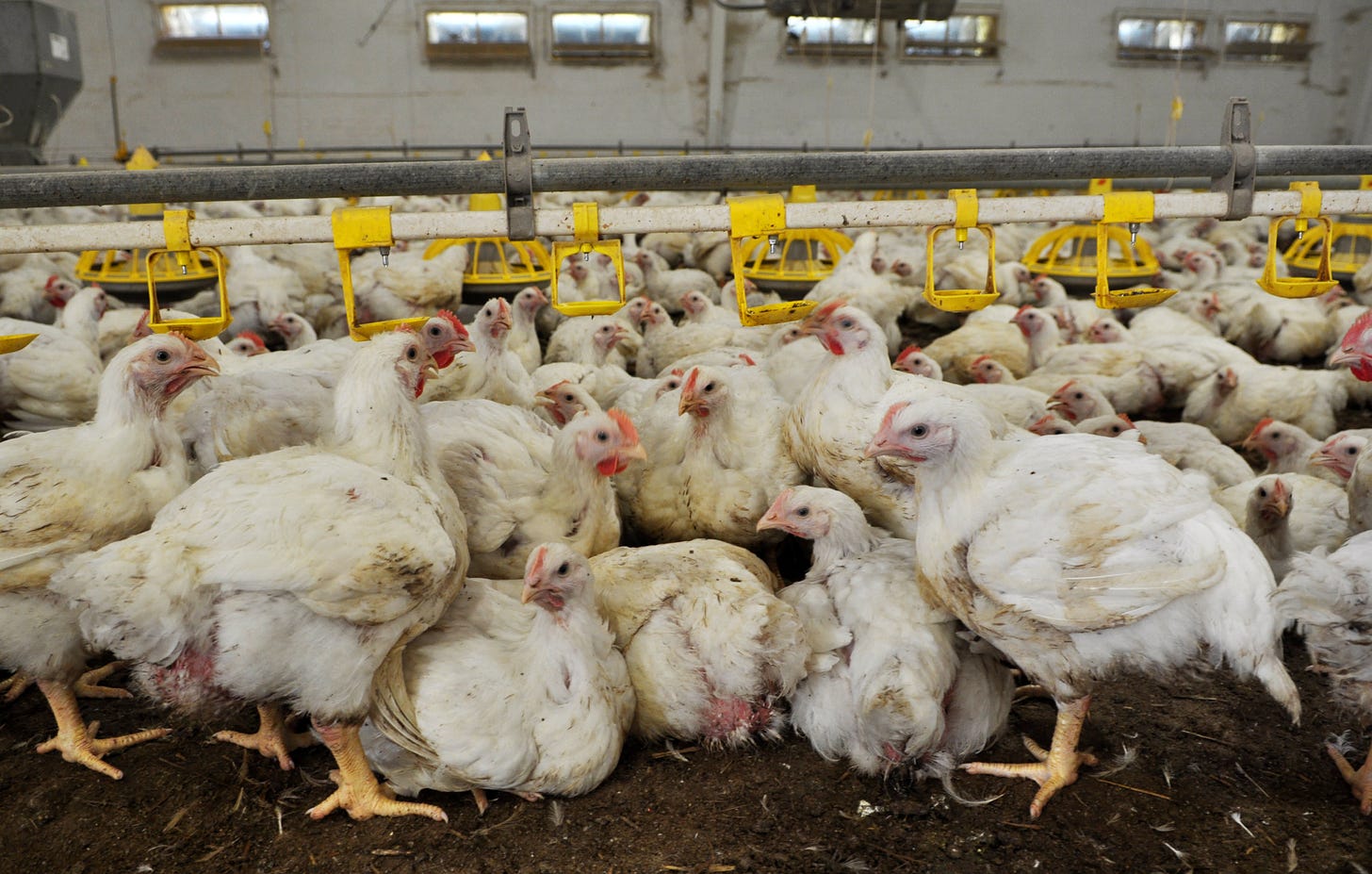A clucking good winter warmer
A recipe for pot-roast chicken, Henri IV style, and Sauce Gribiche
If there’s one single ingredient that best exemplifies what we’ve lost with the industrialisation of food production, I would cite the chicken.
Not too many decades ago, chicken was reserved for special treats. It was brought to the table with much fanfare at birthdays, anniversaries, or to celebrate some achievement. Right up until they were slaughtered, usually by the farmer, they were left to scavenge freely.
I imagine it was this varied diet of seeds, insects and young mice, with unfettered exercise, that gave the bird its full and robust flavour. Not too long ago, I served one that had enjoyed just such a carefree existence for an English Thanksgiving. (Have you ever tried to order a small turkey in November from a British butcher? “Two problems there. One, there’s no such thing as a ‘small’ turkey. Two, it’s November. We only get them in for Christmas.”)
The guests hadn’t seen each other for some time so while we all set to, peeling, cooking, plating up the vegetables and side dishes for our Thanksgiving bird, they chattered away. Came time to convey everything to the table, I told them to serve themselves to the feast while I scraped away at the roasting pan to make the gravy. There was a sudden silence. “Er, hello? What’s this bird?” “Chicken.” “No, it’s not.” “Yes, it is.” “It can’t be.” (Though, strictly speaking, they were correct: it was a capon, the word for a castrated or neutered male chicken, which had scratched around Mrs Westby’s farmyard, and in her kitchen for pieces of cake and scraps from her chopping board.) When I took my own first mouthful, I understood. A flavour I hadn’t experienced for years took me right back to the dining table of my childhood. Not even Poulets de Bresse nor those corn-fed US chickens begin to come close.
Darwin believed the wild ancestor of the domestic chicken was the red junglefowl of Southeast Asia. Remains of birds in the Indus Valley of Northern India confirm that domesticated chickens existed there 4,000 years ago.
Domesticated chickens reached West Asia and the Near East from southern Asia during the third and second millennium BC. The Phoenicians then introduced them to Europe during the 8th century BC.
In the US today, most chicken for eating comes from a British breed, the Cornish hen, or the White Rock, a New England breed. The large Sussex, good both for laying and for eating, is Britain’s most popular breed. As with everything, you get what you pay for: if you can buy a factory chicken that hasn’t spent its 48 days from egg to slaughter packed in with barely the space to move, you will have better flavour and texture and far better stock. And the chicken will have had a better life.
There’s one person who would have appreciated the power of a good chicken.
Henri IV (1553-1610) was the most popular of all French kings and known as good King Henri. Born in Pau, in Southwestern France, he was raised a Protestant but became a Catholic to secure the throne, famously saying, “Paris is worth a Mass.” He tried to end the bitter wars of religion, and passed the Edict of Nantes, which gave a degree of tolerance to French Protestants. He financed France’s first expeditions to Canada, and pioneered trading voyages to the Indies. In Paris, he built the Pont Neuf and the beautiful Place des Vosges.
In 1598, he declared every household in France every Sunday should have a chicken in the pot.
With its poaching stock that creates a fine base for a separate soup or risotto, ‘Poule au Pot’ - Pot Roast Chicken - is a good dish not just for the current never-ending winter but because its other ingredients will add a depth of flavour to even the humblest chicken.
Henri IV was notoriously fond of garlic. If you are less so, reduce the amount in the recipe.
1 bunch flat leaf parsley
150g/5oz bacon or lardons
8 cloves garlic, peeled and finely chopped plus 1 whole head slice crossways in two
200g/7oz breadcrumbs
5½ tablespoons milk
200g/7oz pork sausagemeat
3 eggs, beaten
1 chicken, about 2kg/4lb 4oz
1 litre/2⅛ pint good stock
2 onions, peeled, each stuck with 2 cloves
1 bouquet garni (bundle of a few sprigs of parsley, thyme, a bay leaf, tied together)
Salt and freshly ground black pepper to taste
235ml/½ pint white wine
6 medium carrots, peeled
6 leeks, cleaned and trimmed, tough leaves removed
750g/1lb6oz potatoes, peeled and halved lengthwise
To serve: Dijon mustard, cornichons (gherkins), Sauce Gribiche
Roughly chop the parsley and bacon, and place with 2 cloves of garlic in a bowl. Soad the breadcrumbs in the milk, squeeze out the excess liquid, and add to the bowl. Add the sausagemeat, mix everything thoroughly, add the eggs, and mix again. Stuff the cavity of the chicken then truss or run some kitchen twine round the legs to keep the stuffing inside the chicken.
Add the stock, the onions, the remaining cloves of garlic and the bouquet garni to a large stockpot. Slide the chicken into the stock, season, bring to a boil over medium heat, skimming off any rising scum, then lower the heat. Simmer, covered, 40 minutes.
Lift out the chicken and set on a dish while you pour the stock through a sieve into a mixing bowl to remove the onion and bouquet garni. Return stock and chicken to the pot, add the wine, season with salt and pepper to taste then add the carrots and leek. Simmer 20 minutes then add the potatoes and head of garlic if using.
Simmer over medium-low heat 30-40 minutes more till the potatoes and garlic are cooked through. Remove the chicken to a warm platter. Cut off the string and surround the chicken with the vegetables. Pour over two ladles of stock. Serve the carved chicken in soup bowls with scoops of the stuffing, the vegetables, Sauce gribiche (recipe follows) and bowls of mustard and cornichons*.
Sauce Gribiche is a cold egg sauce, a good one to have up your sleeve, particularly for serving with asparagus which will be with us again very soon.
6 hard boiled eggs (4 whole eggs plus 2 yolks)
1 tablespoon Dijon mustard
salt and freshly ground black pepper to taste
½ tablespoon white wine vinegar
235ml/8 fl oz olive oil
Bunch of fresh flat leaf parsley, leaves only, finely chopped
½ bunch fresh tarragon, leaves only, finely chopped
30g/1oz drained capers, finely chopped
60g/2⅛ oz drained a chopped cornichons (gherkins)
*If substituting gherkins for cornichons, they should neither be sweetened nor dill flavoured.










I am able to get pastured chickens from small farms, where they run around outside, eating grass and bugs in the sunshine. The flavor is wonderful, but my very picky husband finds them tough, and complains when I buy and cook them. I do use them for making chicken stock, but if I want to cook chicken for dinner, I buy one from a local poultry farm, where they are not caged, but are raised in barns, so are somewhat limited in the exercise that outdoor chickens get, which toughens their muscles.
Love reading Tabled. Your deep dives into all food subjects. So glad that my meeting you on China tour put your writing g on my reading radar. Hello from Wisconsin. Pati